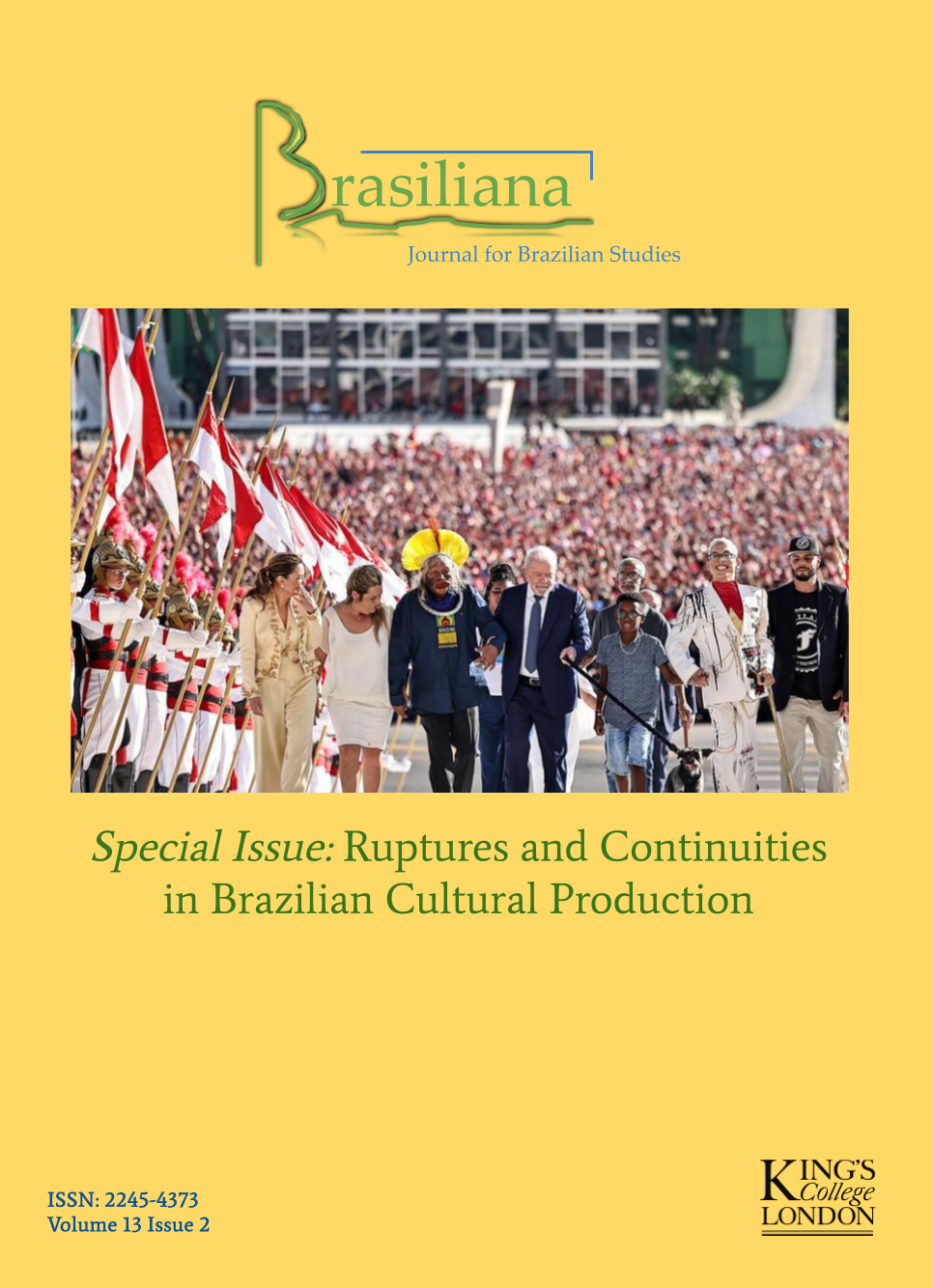Cripping Sports Migration: A Personal Journey
Main Article Content
Abstract
I am José. I was born in Manaus, and because of a hospital infection, I acquired septic arthritis in my right knee, which left me with one leg 10cm shorter than the other. Growing up with my mother as the only provider, I faced multiple surgeries before I even turned 18. I decided to ‘quit’ my medical treatments and study social sciences in Manaus. This is how I ‘came out crip’. I chose to live with my disability and refused normalization. The study of social sciences led me on a journey to Europe that began in 2009 when I went to Porto, Portugal, as an Erasmus Mundus exchange student. I then took a Master’s program at Lund University in social studies of gender, and returned to sociology for my PhD. In 2022, I presented my thesis at Charles University in Prague. That year, I discovered that I had a classic Hodgkin’s lymphoma. I am still fighting cancer. In 2024, I published my first book. On the surface, it has nothing to do with my personal life. It’s not about crip theory or disability studies, but sports migration. It presents a multi-sited ethnography of Brazilian professional athletes who migrated to Central and Eastern Europe for better salaries and working conditions. As my fieldwork developed, I discovered that injuries and pain affect athletes’ decisions to engage in transnational migration. Brazilian football and futsal leagues do not respect FIFA’s calendar, and professional athletes there often complain about working conditions. In this personal account, athletes’ constant need for medical assistance throughout their careers inspired me to think about the usefulness of queer and crip theories to understand both my own trajectory and sports migrants’ lives more broadly.
Article Details
![]()
Articles published in Brasiliana are licensed under a Creative Commons Attribution-NonCommercial-NoDerivs 3.0 Unported License.
When publishing open access, the author signs an author publishing agreement in which they retain copyright and give Brasiliana the right to publish the article. Our Open Access publications are distributed under the terms of the Creative Commons Attribution 4.0 International License, which permits unrestricted use, distribution, and reproduction in any medium, provided the original work is properly cited.
References
Apelmo, Elisabet. 2012a. “Crip Heroes and Social Change.” Lambda Nordica, 17 (1-2), 27-52. https://www.lambdanordica.org/ index.php/lambdanordica/article/view/330
Apelmo, Elisabet. 2012b. “Falling in Love with a Wheelchair: Enabling/Disabling Technologies.” Sport in Society, 15 (3), 399-408.
Behar, Ruth, and Deborah A. Gordon, editors. 1995. Women Writing Culture. Berkeley: University of California Press.
Berlant, Lauren. 2011. “Cruel Optimism” in Cruel Optimism. 23-49. Durham: Duke University Press.
Burlamaqui, Luiz Guilherme. 2019. A Dança das Cadeiras: A Eleição de João Havelange à Presidência da FIFA (1950-1974). PhD dissertation, University of São Paulo.
Butler, Judith. 1990. Gender Trouble: Feminism and the Subversion of Identity. London: Routledge.
Butler, Judith. 2004. Undoing Gender. London: Routledge.
Butler, Judith. 2005. Giving an Account of Oneself. New York: Fordham University Press.
Curry, Timothy J., and Richard H. Strauss. 1994. “A Little Pain Never Hurt Anybody: A Photo‑essay on the Normalization of Sport Injuries.” Sociology of Sport Journal 11 (2): 195–208.
de Oliveira Filho, José H. 2024. Sport Migrants, Precarity, and Identity: Brazilian Footballers in Central and Eastern Europe. London: Routledge.
Elias, Norbert, and Eric G. Dunning. 2008 [1986]. Quest for Excitement: Sport and Leisure in the Civilizing Process. Dublin: University College Dublin Press.
Fahey, Jamie. 2021. Futsal: The Indoor Game that is Revolutionizing the World Soccer. London: Melville House.
Farman, Abou. 2017. “Terminality.” Social Text 35, (2 (131)): 93–118.
Foucault, Michel. 1986. The History of Sexuality: The Care of the Self. Vol. 3. New York: Pantheon Books.
Giulianotti, Richard and Roland Robertson. 2009. Football and Globalization. London: Sage.
Guttmann, Allen. 1978. From Ritual to Record: The Nature of Modern Sports. New York: Columbia University Press.
Karlsson, Mikael Mery, and Jens Rydström. 2023. Crip theory: A Useful Tool For Social Analysis. NORA-Nordic Journal of Feminist and Gender Research 31 (4): 395-410.
Löfgren-Mårtenson, Lotta. 2013. ““Hip to be crip?” About Crip Theory, Sexuality and People with Intellectual Disabilities.” Sexuality and Disability 31, 413-424.
Malcom, Nancy L. 2006. ““Shaking It Off” and “Toughing It Out” Socialization to Pain and Injury in Girls’ Softball.” Journal of Contemporary Ethnography 35, 5: 495–525.
McRuer, Robert. 2006. Crip Theory: Cultural Signs of Queerness and Disability. New York: New York University Press.
Messner, Michael. 1992. Power at Play: Sports and the Problem of Masculinity. Boston: Beacon Press.
Poli, Raffaele, Loïc Ravenel, and Roger Besson. 2019. “Exporting Countries in World Football.” CIES Football Observatory Monthly Report. Issue 45 (May) http://www.football-observatory.com/IMG/sites/mr/mr45/en/
Rich, Adrienne. 1980. “Compulsory Heterosexuality and Lesbian Experience” Signs 5 (4). 631-660.
Richard, Rémi, Helene Joncheray, and Valentine Duquesne. 2023. Cripping sport and physical activity: An intersectional approach to gender and disability. Sport, Ethics and Philosophy 17 (3): 327-341.
Roderick, Martin. 1998. “The Sociology of Risk, Pain, and Injury: A Comment on the Work of Howard L. Nixon II.” Sociology of Sport Journal 15 (1): 64-79.
Sabo, Donald. 2004. “The Politics of Sports Injury: Hierarchy, Power and the Pain Principle.” In Sporting Bodies, Damaged Selves: Sociological Studies of Sports‑related Injury, edited by Kevin Young, 59–79. Bingley: Emerald.
Said, Edward. 1985. “Orientalism Reconsidered.” Cultural Critique 1: 89–107.
Tomlinson, Alan. 2018. “FIFA: Ethics, Voice and Organisational Power Plays.” In Transforming Sport: Knowledges, Practices, Structures, edited by Thomas Carter, Daniel Burdsey and Mark Doidge, 121–135. New York: Routledge.
Young, Kevin, Philip White, and William McTeer. 1994. “Body Talk: Male Athletes Reflect on Sport, Injury, and Pain.” Sociology of Sport Journal 11 (2): 175–194.

